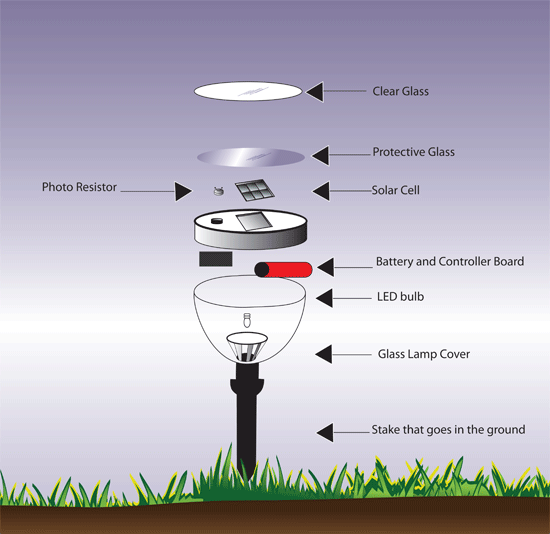Saving Daylight
- by David Neubert - updated on 3/7/2014
Since the dawn of mankind, humans have marveled at the power of the sun. After centuries of observation and studying, it's obvious that it is truly the energy source that enables life for all creatures on Earth. However, it's only been over the past few decades that we've actually figured out the means to use its vast power to energize our homes and businesses; and only over the past few years have we actually found a way to make it practical.
Today, the developments in solar power are as exciting as any in the realm of smart, renewable energy. In fact, you can't even drive down a residential street anymore without seeing rows of solar-powered landscape lights, ornately displayed near walkways or in homeowners' yards. Finally the technology has caught up with the demand, and the cost of manufacturing solar cells for the masses has dipped low enough to make solar energy an extremely plausible solution for all of us.
The key components for harnessing the sun's energy into solar landscape or garden lighting are:
Photovoltaic cells – These are the solar cells that make solar panels. First invented in the 1880's, these cells have come a long way in their functionality and affordability. This is where sunlight is converted into an electrical current
Rechargeable batteries – Once the electricity is created it needs to be stored for future use. In the case of landscape lighting, NiMH and Lithium Iron Phosphate rechargeable batteries are often used. Designed for electricity to only flow into the battery, they will power the light once it becomes dark.

LEDs – With advances in LED technology, most solar lights use these light emitting diodes, as they are durable and last for years. These LED bulbs are the ideal way to provide light in this application. For uses that require more intense light output, halogen light bulbs can be used in addition to, or instead of, LEDs.
Circuitry – The way a solar light is wired will determine the overall efficiency at which sunlight is converted into electricity, stored and emits light when needed.
Although you can find multiple variations and designs for solar-powered outdoor lighting at just about any hardware and gardening store, it's important to remember that after a couple of years, depending on the frequency of use, it's likely that the batteries will need to be replaced. By using a basic Phillips-head screwdriver, you can usually just unscrew the battery case and replace the battery with the same type of battery originally installed by the manufacturer. And, in most cases these days, you'll find that either AA or AAA NiMH or Lithium Iron Phosphate rechargeable batteries will be the replacements that you're looking for.
With the return of Daylight Savings Time on Sunday, more hours of sunlight will mean more solar power to light up our lawns and gardens. Save energy and money by utilizing our most abundant, powerful and renewable energy source – the sun.